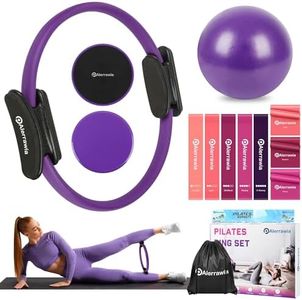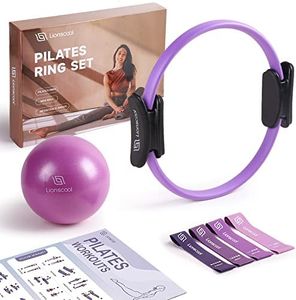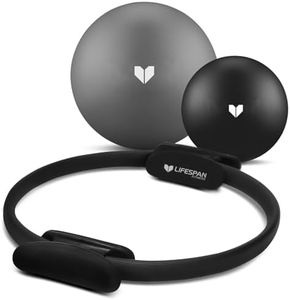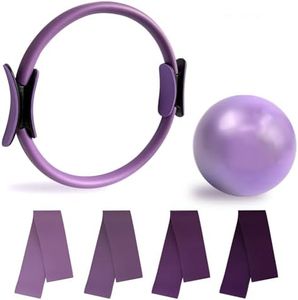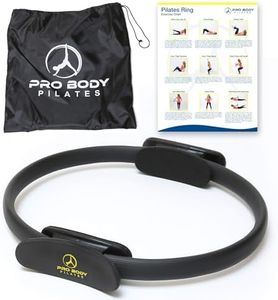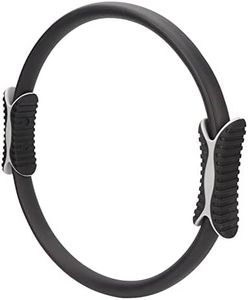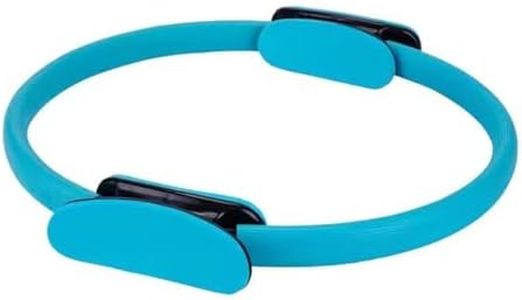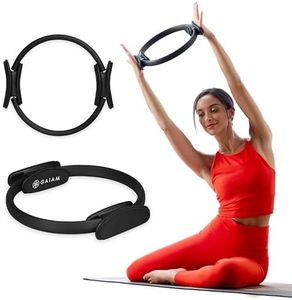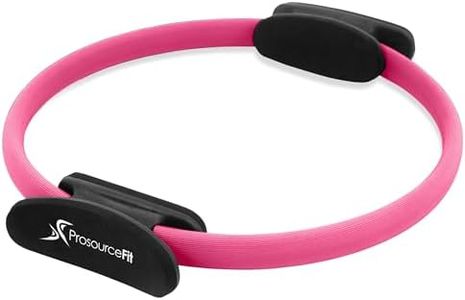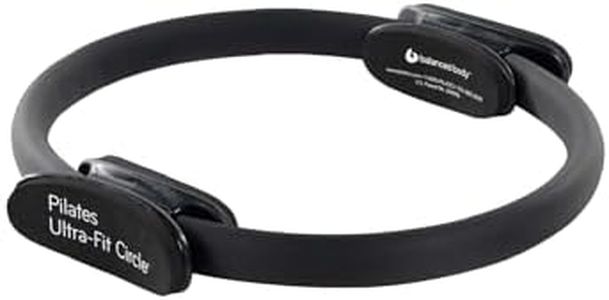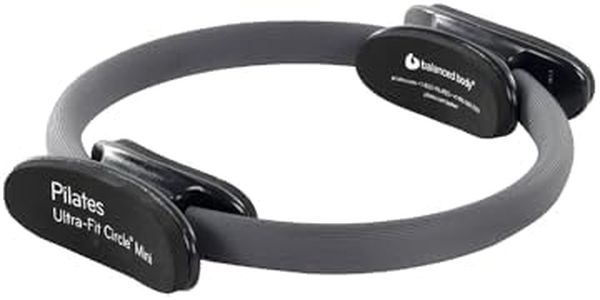We Use CookiesWe use cookies to enhance the security, performance,
functionality and for analytical and promotional activities. By continuing to browse this site you
are agreeing to our privacy policy
10 Best Pilates Rings
From leading brands and best sellers available on the web.Buying Guide for the Best Pilates Rings
When shopping for a Pilates ring, your aim is to find a piece of equipment that fits your fitness level, workout goals, and comfort needs. Pilates rings, also known as magic circles, are simple yet versatile tools that add resistance and focus to your Pilates exercises. To make the best choice, consider the features that affect how the ring feels and performs during your workouts. Your daily routine, personal strength, and experience with Pilates will help you choose the right ring for you.Resistance LevelThe resistance level of a Pilates ring refers to how hard you have to squeeze it. This is determined by the material and thickness of the ring. Lighter resistance rings bend more easily and are suited for beginners, gentle rehabilitation, or those with joint sensitivities. Medium resistance rings offer a moderate challenge and are good for most regular exercisers, while higher resistance rings require more strength and benefit advanced users looking to build muscle. When choosing, think about your fitness level—if you’re just starting out or want to use the ring for toning, go for a lighter to medium resistance. If you’re experienced or want more strength and muscle-building, consider a firmer ring.
DiameterThe diameter of the Pilates ring influences how comfortable and effective it is for your body size and the type of exercises you do. Most rings range from about 12 to 15 inches. Smaller diameter rings can provide more intense resistance and are often easier for people with smaller bodies or shorter arms to use. Larger diameter rings are typically better for taller individuals, or those who want to perform exercises with a wider grip. To choose, consider your own body size and your preferred exercises—if you want a general-use ring, pick a medium diameter, but if you’re very petite or tall, look for a size that accommodates your reach.
Handle Comfort and DesignPilates rings come with padded handles on both the inner and outer sides. The comfort and design of these handles are important because they affect how easily and comfortably you can press the ring during exercises. Look for handles with sufficient padding and an ergonomic design that fit comfortably in your hands and between your thighs. Thin, hard, or poorly designed handles may cause discomfort, especially during longer sessions. Choose a ring with handles that feel secure and soft if you plan to use it frequently, or if you have sensitivity in your hands or legs.
Material and DurabilityMost Pilates rings are made from flexible metal or reinforced plastic covered with rubber or foam. The material affects not only the resistance but also the ring’s durability. Metal rings tend to offer more consistent resistance and last longer, while plastic rings are lighter and sometimes easier to maneuver. Durability is important if you plan to use your ring a lot or want it to last for years—choose a ring made from high-quality materials if you want a long-lasting investment, but a lighter plastic ring could work if you want something lightweight and easy to carry.
WeightThe weight of the Pilates ring impacts how easy it is to carry, store, and move during exercise. Lighter rings are more travel-friendly and easier for beginners to handle, while heavier rings can feel more stable and add a slight extra challenge. If you plan on taking your ring to classes or traveling, a lightweight ring is a good option. If you exercise primarily at home and want a ring that feels solid, you might prefer something a bit heavier.
